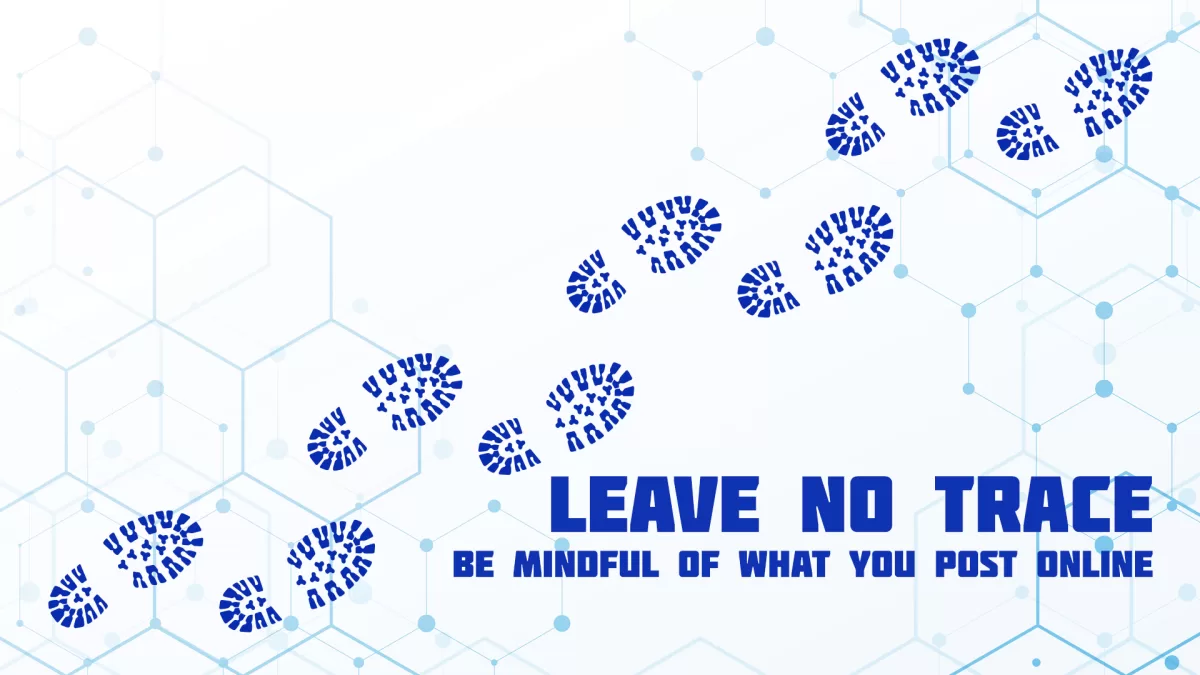
Leave No Trace: How to Manage and Protect Your Digital Footprint
In today’s digital age, almost everything we do is recorded online. Every post, like, comment, and search leaves a trail of data. This digital trace is known as the “digital footprint”. Our digital footprint is a record of our online activity. This includes everything you do online, such as Social Media Activity, Email Communications, and Search History. Each Internet user alone generates about 2.5 quintillion bytes of data each day, which adds to our digital footprint.
There are two types of digital footprints:
- Active digital footprint: Our active digital footprint is the data we intentionally create and share online. This includes social media profiles, blogs and online portfolios. This includes comments you leave on other people’s posts and content you create and share. Passive digital footprint
- Passive digital footprint: A passive digital footprint is data about us that is created without our knowledge or consent. This includes cookies, web analytics and online tracking. Advertisers use this data to deliver targeted ads based on your online behavior.
Advantages of a digital footprint
A digital footprint has several advantages. It helps you build your professional network, showcase your skills and accomplishments, and stay in touch with friends and family. It can also help you find a job or build your reputation online.
Disadvantages of Digital Footprint
However, a digital footprint can also have negative consequences. It can be used against us in legal or employment situations and can make us a target for cybercriminals.Also, posting inappropriate content or engaging in online bullying , may damage our reputation.
Can I delete my digital footprint?
It is almost impossible to completely erase your digital footprint. Once data is posted online, erasure may be difficult or impossible. However, you can manage your digital footprint and minimize the impact on your privacy and reputation.
Recommendations for maintaining an online presence:
- Be careful what you post online.
Before you share anything online, think about how it will affect your reputation and whether it is appropriate for the public to do so. - Check your privacy settings regularly.
Please review the privacy settings of all social media accounts and other online platforms to ensure that you only share information with people you trust. - Use a virtual private network (VPN).
A VPN helps protect your online privacy by encrypting your internet connection and masking your IP address. - Use two-factor authentication.
Two-factor authentication adds an extra layer of security to your account by requiring a second form of verification. B. A code sent to your phone. - Keep your software up to date.
Regularly update your operating system and applications so that all security vulnerabilities are patched. - Check your name online regularly.
This allows us to identify negative information about ourselves online and take steps to address it.
Managing your digital footprint is an essential part of protecting your online privacy and reputation. By being mindful of what you post online, regularly reviewing your privacy settings, and taking other steps to protect your account and information, you can help protect your digital identity without leaving a trace.



Virtual Private Network (VPN) is good but it slows down your internet speed.